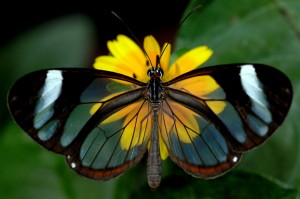As someone who was born and raised in New Jersey I could relate with the Toxic Avenger, both of us natives of the state and both of us dealing with the legacy of toxic waste. However that is where the similarities end. This story isn’t about a mutant hero but rather plants with the distinctive ability to help detoxify polluted sites. As an urban forest ecologist, you could say, “I speak for the trees”.


From left to right: the Toxic Avenger and of course, the Lorax
https://www.comicvine.com/toxic-avenger/4005-43704/images/
https://lemonlimeadventures.com/the-lorax-activities-lessons/
As a native of New Jersey it might not be a surprise that I study contaminated sites in urban areas, more specifically, I study the trees that inhabit these sites. Over a third of New Jersey is urban with nearly 95 percent of the population living in those urban areas. It also boasts 23,000 contaminated sites many of which are in urban areas. These contaminated sites are commonly referred to as brownfields. Brownfields describe land that once had industrial or commercial uses and that now remain vacant due to contamination. In some cases when money is not available to redevelop, land may sit vacant for years and this is when plants move in. When plants start to re-inhabit the land and form complex communities this process is known as spontaneous vegetation. New Jersey is an ideal state to address how plants are able to survive and thrive in urban and contaminated sites because my home state has both in abundance.


On the left: urban areas in NJ marked in red
https://www.ncgia.ucsb.edu/varenius/ppgis/papers/tulloch/tulloch.html
On the right: known contaminated sites in NJ
https://www.state.nj.us/dep/gis/digidownload/images/statewide/Envr_mon_gw_KCSL.gif
So what exactly makes certain plants able to handle the stresses of contaminated sites? Are all stresses equal? Especially when you consider the types of contamination can range from oil and gas (hydrocarbons), heavy metal, nuclear waste, pesticides, fertilizers and a host of other nasty solvents. Take heavy metal contamination, for example. Scientists and gardeners alike know that plants need a certain amount of metal micronutrients like zinc, copper, iron and nickel to have healthy growth but what is that threshold and what can plants do to avoid too much of a good thing? Well plants exhibit three “strategies” when it comes to most contamination; they can exclude, tolerate or accumulate the toxic substance. Of course it is the last trait that we care about, the ability to accumulate and in some cases re-utilize the source of the contamination to make it less virulent.


Oh, the things a plant can do! Some examples above. Go to NYC Urban Ominbus website to read more about this topic and what you can do at home.
So who cares, right? Well since the 1990s plants have been used to help remediate polluted sites. The use of plants to help process and clean brownfields is usually referred to as phytoremediation. Many different life forms of plants, from annuals, perennials, woody shrubs and trees, share this ability. There are multiple advantages to phytoremediation when compared to traditional remediation but the big two are cost and effectiveness. Traditional remediation generally consists of three options: excavating the material to treat and remove pollutants, transporting the soil to a landfill for disposal, or capping the contamination within the site and monitoring it to ensure pollution doesn’t escape. This can be very costly and creates a big carbon footprint from the use of heavy equipment needed for excavation and from the dump trucks associated with hauling contaminated soil away and adding back clean soil. In contrast, phytoremediation can be done on site (or in situ) and requires no removal of soil (which avoids the absorbent cost and health hazards associated with excavating), making it a minimal management solution. Not to mention phytoremediation can be a tenth of the cost of traditional remediation. Although, it does take longer than traditional methods, in the process it creates green space within urban areas, which are a valuable commodity.
From brownfield to forested green space at Liberty State Park
Photo credit Andy Blair, abandon railroad with World Trade Center in background
https://www.flickr.com/photos/wavz13/4832082885/
What makes green space a valuable commodity, you might ask? Quite simply, green space has been shown to improve the quality of life in urban areas. Ecologically they provide what scientists’ call ecosystem services such as clean air and water and habitat for plants and animals. Arguably, one most important ecosystems service we get from green space is a sink for carbon in the face of global climate change. Economically, green spaces, especially parks, can bring in nature lovers and ecotourists, which can help fuel the local economy. Socially, green spaces can promote health and well-being in a community. So hopefully next time you walk by a vacant urban lot and see plants sprouting up, you can appreciate what those plants are doing and perhaps advocate for more green space in a world that continues to change from green to grey.




